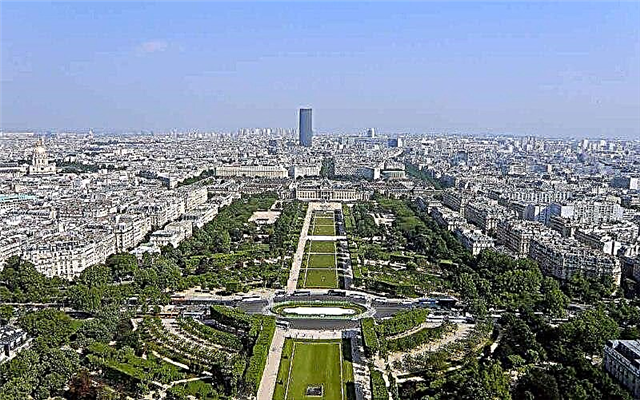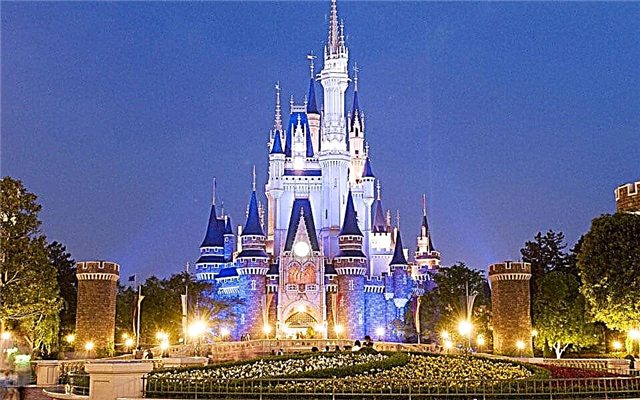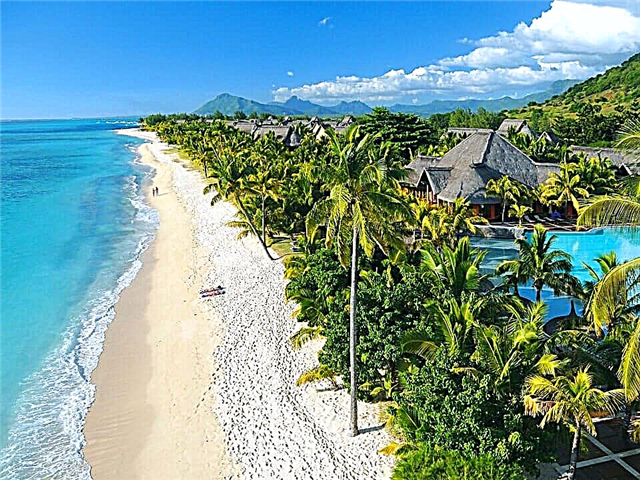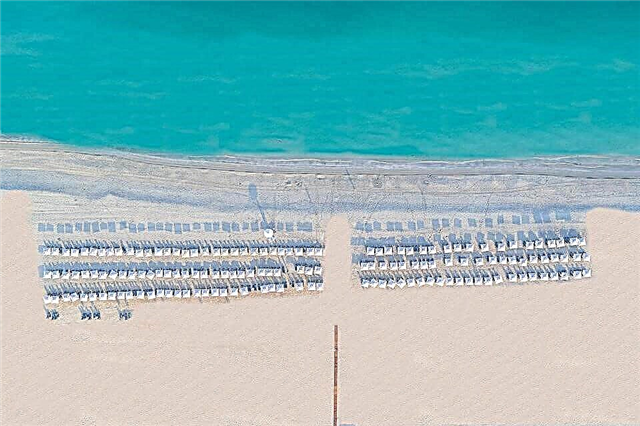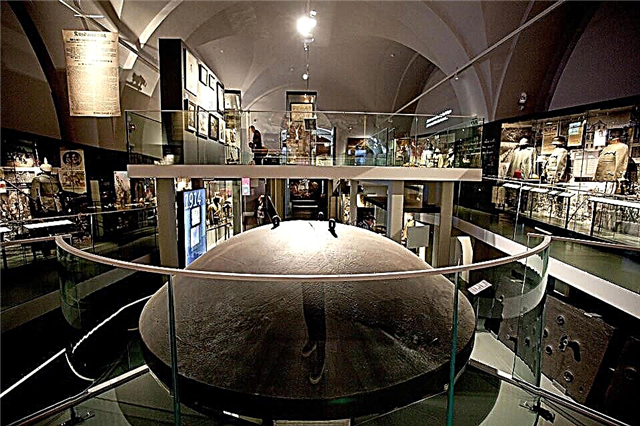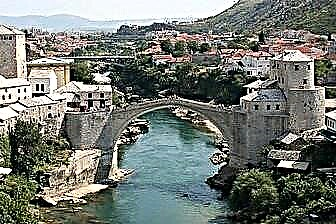Despite its favorable location, mild climate and many attractions, Bosnia and Herzegovina for a long time could not compete with its more famous tourist neighbors. But in recent years, this small country has attracted more and more visitors.
Tourists from all over the world are attracted by ski resorts, wonderful beaches of Neum, picturesque landscapes and original local cuisine. Bosnia and Herzegovina is deservedly called the most eastern of the European states. Catholic and Orthodox churches here peacefully coexist with mosques, and medieval buildings and streets - with new buildings in recent years.
Fans of philosophical reflections should definitely visit the site of the assassination of Archduke Franz Ferdinand on the Latin Bridge and the fortified bunker of Marshal Tito in a cave near Drvar.
In memory of visiting Bosnia and Herzegovina, you can bring very beautiful embroidered textiles, leather clothes and shoes, as well as a variety of delicacies - baklava, sudjuk cookies, strong fruit brandy or local wine.

Popular hotels at affordable prices.
from 500 rubles / day
What to see in Bosnia and Herzegovina?
The most interesting and beautiful places, photos and a short description.
Mostar old town
Mostar's Old Town is home to many examples of medieval architecture. The Muslibegovits House-Museum deserves special attention, in which visitors are introduced to the lifestyle of a Turkish family of the 19th century. The picturesque mosques of Koski Mehmet Pasha and Karadoz Bey are open to all comers.

Neretva river
The unusually picturesque Neretva River flows through the territory of Bosnia and Herzegovina. In the Middle Ages, river pirates operated here, and in 1943 one of the most important Balkan battles took place on the Neretva, during which partisan detachments managed to disrupt the Wehrmacht's operation. The most expensive Yugoslav film "The Battle of the Neretva" was shot about this in 1969.

Sutjeska National Park
The picturesque park is located on the territory of the state formation Republic of Srpska. The relict forest of Peručica, Lake Trnovac, Mount Maglic, the Valley of Heroes memorial complex are some of the attractions of these places. The park was formed in 1962. You can walk along the mountain trails and look at the three-hundred-year-old pines by coming here from the nearby town of Foča.

Markale square
The capital of Bosnia and Herzegovina, Sarajevo, is located at the intersection of ancient trade routes, so it is no wonder that its main square has always been used as a place for trade. Today, there is a market on Markale Square, where you can buy many delicious gifts.

Latin Bridge in Sarajevo
This is perhaps the most notorious bridge in the world. Here, on August 28, 1914, an event occurred that caused the outbreak of the First World War. Archduke Franz Ferdinand and his wife were killed by pistol shots by Serbian student Gavrila Princip. In its current form, the bridge has remained unchanged almost from the end of the 18th century. There is a museum dedicated to the bridge nearby.

Kravice waterfall
The waterfall is located 40 kilometers south of Mostar on the Trebižac River. Its height is about 25 meters and its width is about 120 meters. Kravice is a very popular holiday destination in the spring and during the summer. During the tourist season, there are small cafes around the waterfall and picnic areas. Nearby there is a beautiful grotto with stalactites; there is also an interesting old non-working water mill here.

Royal Mosque in Sarajevo
The oldest mosque in Bosnia and Herzegovina, named after Suleiman I, is also called the Tsar's Mosque. It was built in the 15th century, and upon completion of the work, it was almost completely burned down in a severe fire. The restoration of the building was completed only in the 16th century. Today the Tsar's Mosque is open to everyone.

Old bridge
The pedestrian Old Bridge over the Neretva, built by the Turks for defense in the 16th century, connects the two parts of Mostar. In 1993, the Old Bridge was destroyed. For its restoration, all medieval elements were used that were raised from the bottom of the Neretva River.

Caravanserai Moricha Khan
The well-preserved Moricha Khan caravanserai was built in the 16th century to provide a safe stay for traders traveling from the country to the Adriatic and back. Today, there are several cafes with national cuisine and souvenir shops, and Moricha Khan's rooms and galleries are open to tourists.

Vrelo-Bosne Natural Park
The picturesque Vrelo-Bosne Park is located in the center of the state. It was founded during the time of the Austro-Hungarians, but the military conflict of the 20th century caused significant damage to the park. And only thanks to the caring public, Vrelo-Bosne was restored in 2000. Here you can ride a horse-drawn carriage, take pictures against the backdrop of wooden bridges, or visit a local open-air restaurant.

National Museum of Bosnia and Herzegovina
The National Museum of Bosnia and Herzegovina is renowned for its extensive collection of exhibits. It also houses the gravestones - carved tombstones, which are a national treasure of the state. The building that houses the National Museum was built in 1888.

Yakhorina
This is a mountain near Sarajevo, the slopes of which are covered with a meter layer of snow from October to May. Thanks to such wonderful natural conditions, a world-famous ski resort is located here. Hotels and chalets for every taste, red runs and nine ski lifts - Jahorina has everything you need for comfortable skiing.

Sarajevo old town
The capital of Bosnia and Herzegovina is called the European Jerusalem because the eastern buildings of the Old City and the western buildings of the Austro-Hungarian period are organically connected here. Pigeon Square with a fountain, located in the Bascarsija area, is considered the heart of Old Sarajevo.

Military tunnel
The private museum, created by the Kolar family, includes a 20 meter special tunnel. It was used by the residents of besieged Sarajevo to exit the civilian population and deliver food during the recent military conflict. In the past, this military tunnel was over 700 meters long, and its construction took about six months.

Medjugorje
The small village of Medjugorje became famous in the 20th century, when six local children saw the image of the Virgin on the hill. And although this phenomenon was not officially recognized by the church, more than a million pilgrims regularly visit the local hill of Apparition. Also noteworthy is the Church of St. James, built in the classic Balkan style, and the Candle Park, where believers thank the Mother of God for her help in fulfilling their wishes.

Gazi Khusrev Bey Mosque
The Gazi Khusrev Bey Mosque was built in the 16th century and is a perfectly preserved example of buildings from the Ottoman period. The mosque got its name in honor of the philanthropist Gazi Khusrev-bey, who actively participated in the construction and development of Sarajevo. Everyone can visit the mosque, you just need to wait until the end of the prayer.

Bascarsija square
The heart of Sarajevo is its main shopping area. Built in 1462, Bascarsija Square is still the cultural and historical center of the capital. There is a clock tower, Gazi Khusrev Bey Mosque, as well as a market where tourists can buy original souvenirs to commemorate their visit to Bosnia and Herzegovina.

Mount Maglich
Climbing Mount Maglich is a popular tourist route.The majestic landscapes, clean air and the relative simplicity of the local mountain trails attract outdoor enthusiasts from all over the world. The mountain is 2387 meters high and is the highest point in Bosnia and Herzegovina. Not far from Maglic there is a very beautiful glacial lake Trnovacko.

Visegrad bridge
A famous example of Turkish engineering of the Middle Ages, the Visegrad Bridge over the Drin River was inscribed on the UNESCO World Heritage List in 2007. This structure, which is also called the Mehmed Pasha Bridge, consists of 11 stone spans and connects both parts of the city of Visegrad. The Mehmed Pasha Bridge was immortalized in a book published in 1945 by Nobel laureate Ivo Andric.

The city of Kupres
From November to April, the city of Kupres, located in the northern part of Bosnia and Herzegovina, becomes the center of ski tourism. If natural snow is scarce, all four local ski runs are kept in excellent condition with special snow cannons. Also in Kupres there are several hotels and hotels for every taste.

Stechki
Unique medieval tombstones decorated with carvings have been found in several Balkan countries. The most famous location of the drains is in the small town of Zabljak in the north of the state. Samples of these tombstones are also kept in the National Museum of Bosnia and Herzegovina.

Cathedral of the Sacred Heart of Jesus
The main Catholic church in Sarajevo, which is located in the central quarters of the city, was built in 1889. The architect Josip Vantsas built this neo-Gothic cathedral based on Notre Dame de Paris. Inside, the Cathedral of the Sacred Heart of Jesus is decorated with graceful stained glass windows.

Tito's hideout in Drvar
Tito's hideout is a famous cave near the town of Drvar, where the Yugoslav Marshal Josip Broz Tito hid during the Second World War. To capture and destroy Tito, together with the Supreme Headquarters of the Liberation Movement, the Germans carried out Operation Resselsprung, during which Tito took refuge in a cave near Drvar, and then fled. In 1944, the cave was turned into a museum.



